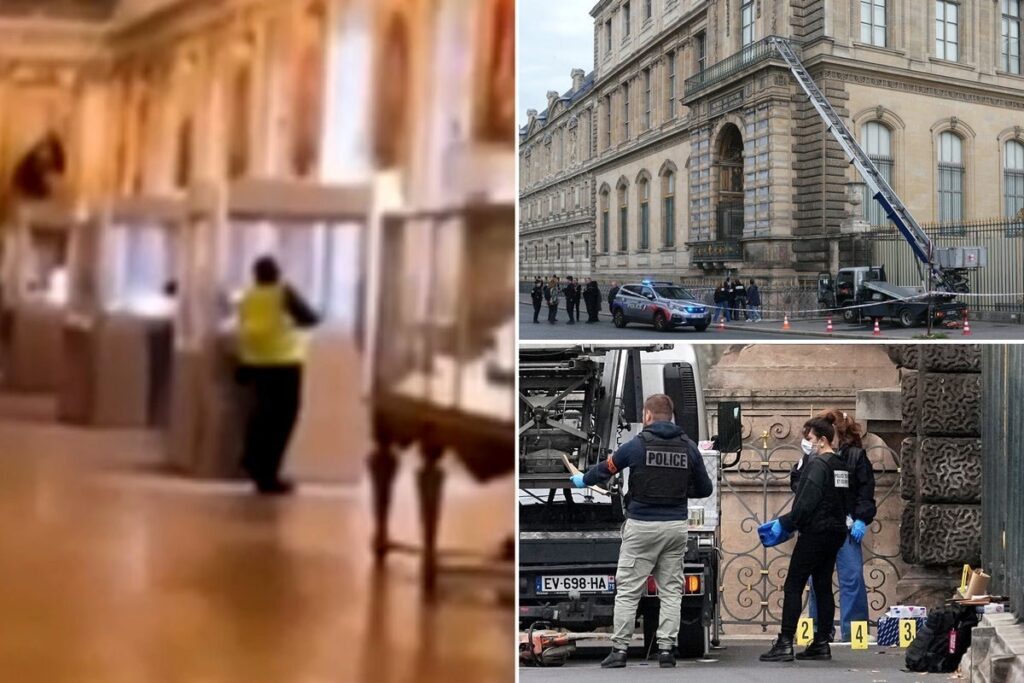Australian Art Expert Uncovers Dark Truth Behind Daring Louvre Heist: Stolen Jewels May End Up Funding Drug Cartels or in the Hands of ‘Vain’ Collectors
- Respected Sydney art dealer Leigh Capel believes stolen Louvre jewels will be sold on the black market or bought by private collectors
- French authorities are investigating whether the heist was commissioned by a collector
- The stolen items, including an emerald-and-diamond necklace given by Napoleon I to Empress Marie Louise, could fund drug cartels or be broken down for their material value
As the world grapples with the brazen daylight heist at the Louvre Museum in Paris, an Australian art expert has revealed a shocking theory about the likely fate of the stolen jewels. According to Sydney-based dealer Leigh Capel, the “priceless” artefacts may end up funding drug cartels or in the hands of “vain” private collectors.
The daring heist, which occurred on Sunday morning, saw masked thieves break into the museum using a furniture lift and chainsaws, making off with eight items of jewellery, including an emerald-and-diamond necklace given by Napoleon I to Empress Marie Louise. The thieves, who were dressed as construction workers, fled the scene on high-powered scooters.
Capel, of Belle Epoque Fine Arts, believes there are three categories of buyers who would be interested in the stolen artefacts. “They may be people who are unsuspecting of the crime itself and bought the items not knowing they are stolen, or they inherit these items,” he told news.com.au. “Ultimately, these items will eventually show up at auction as they have previously.”
The second type of buyer, according to Capel, could be an experienced collector who has commissioned a group of professionals to construct the heist and steal very specific items for their collection, not to be shown around, more for their vanity. “And the other type, the criminals who will steal these items for buyers who are on the black market. They’re waiting for items of incredible worth or cultural value to be purchased for the reason that they can be used as collateral down the track.”

Capel pointed to a notorious 2002 break-in at the van Gogh Museum as an example. “For example, similar to the Louvre, in 2002, two career criminals broke into the van Gogh Museum and stole two extremely valuable van Gogh paintings, which they took to the black market,” he said.
In a heartbreaking development, French authorities have acknowledged that the stolen pieces may never be recovered, and could be broken down for their material value or sold on the black market to fund drug cartels. “Now, what potentially can happen to these eight stolen items from the looters?” Capel continued. “They could disappear into the black market, where they may be sold numerous times and never see the light of day again.”
French Prosecutor Laure Beccuau has backed up Capel’s theory, stating that authorities are investigating whether the heist was commissioned by a collector. “We’re looking at the hypothesis of organised crime,” she told BFM TV, adding that it could be professionals working on spec for a buyer.
As the investigation into the daring heist continues, the art world remains on high alert, wondering what will become of the stolen jewels and who will ultimately be responsible for their downfall.

